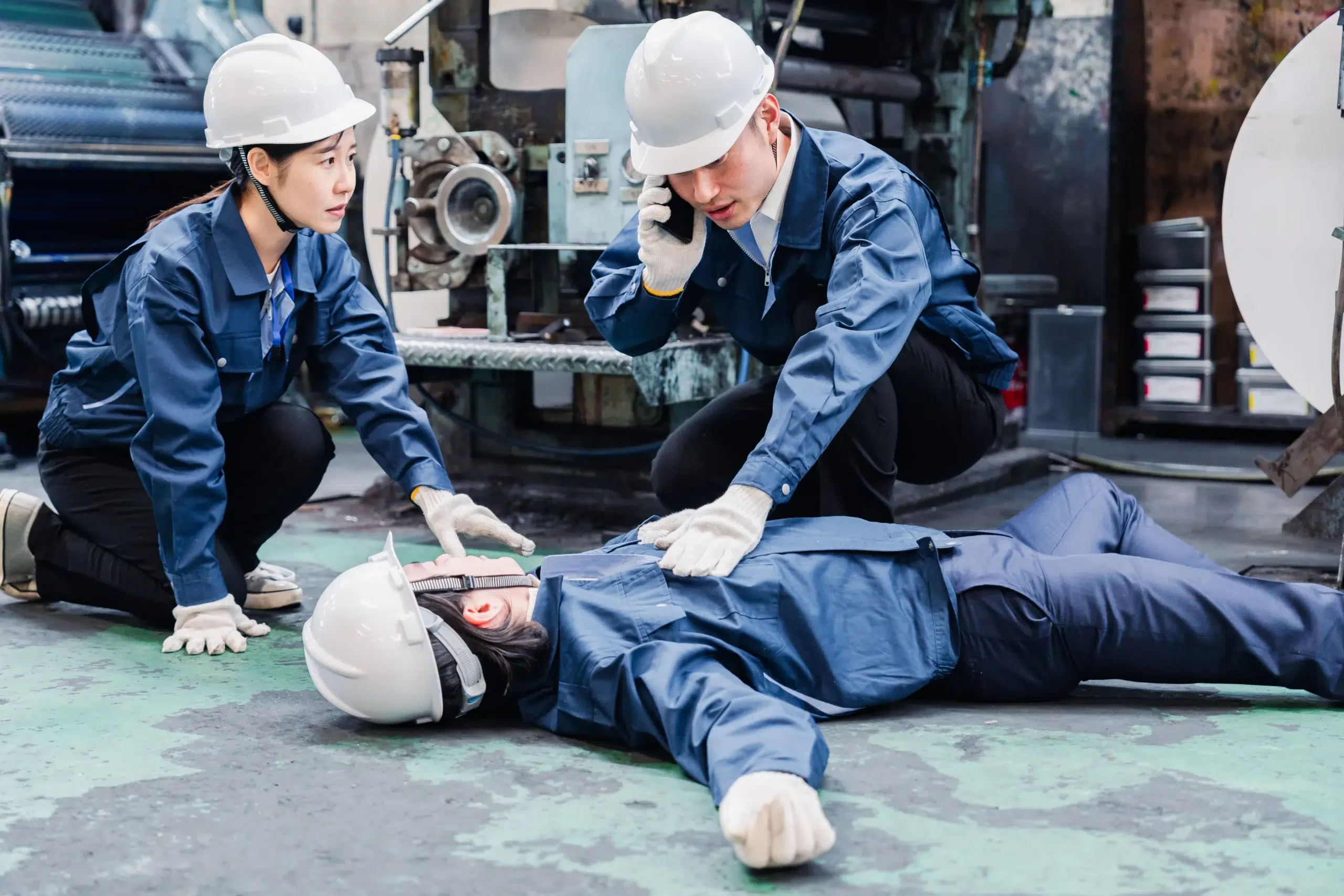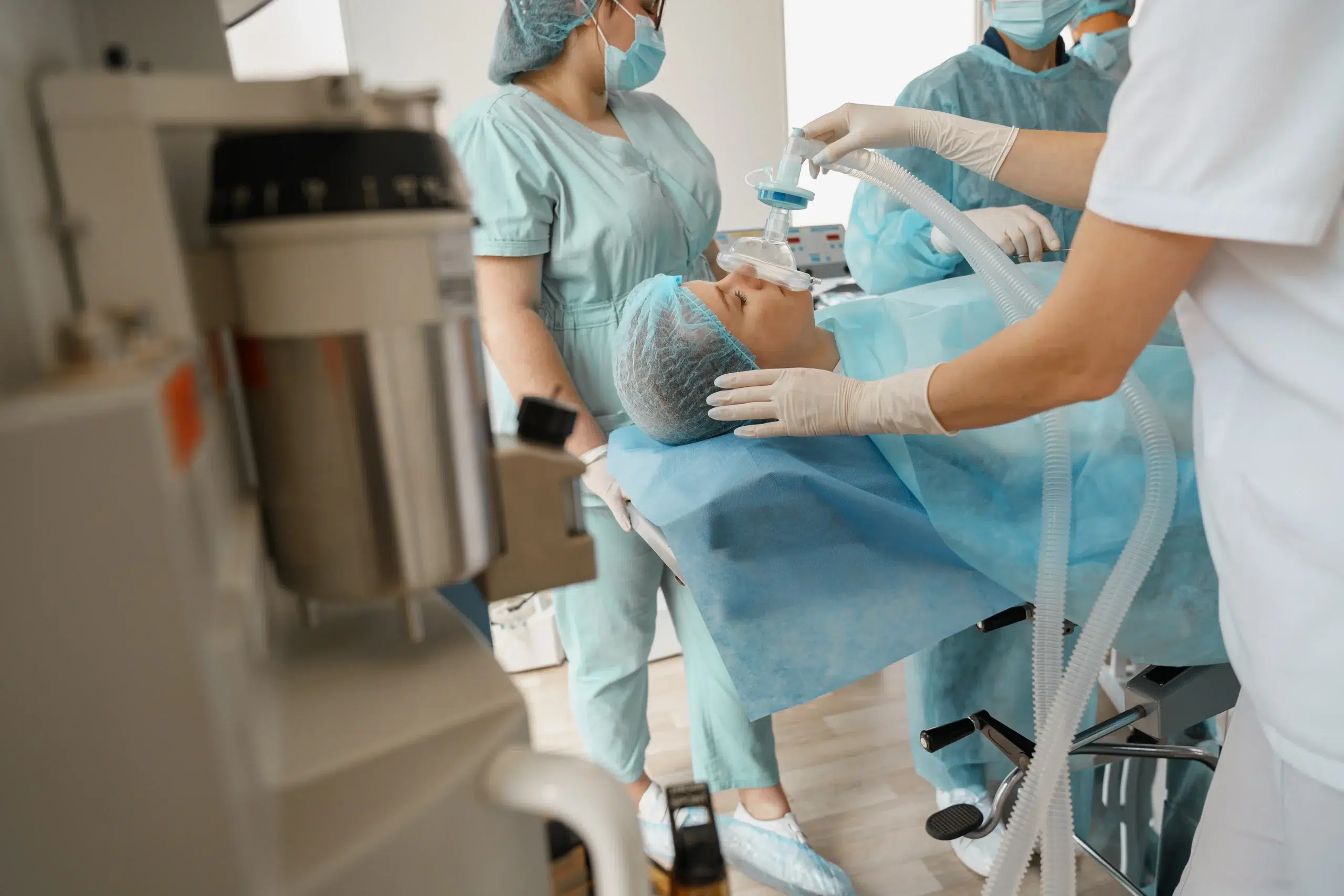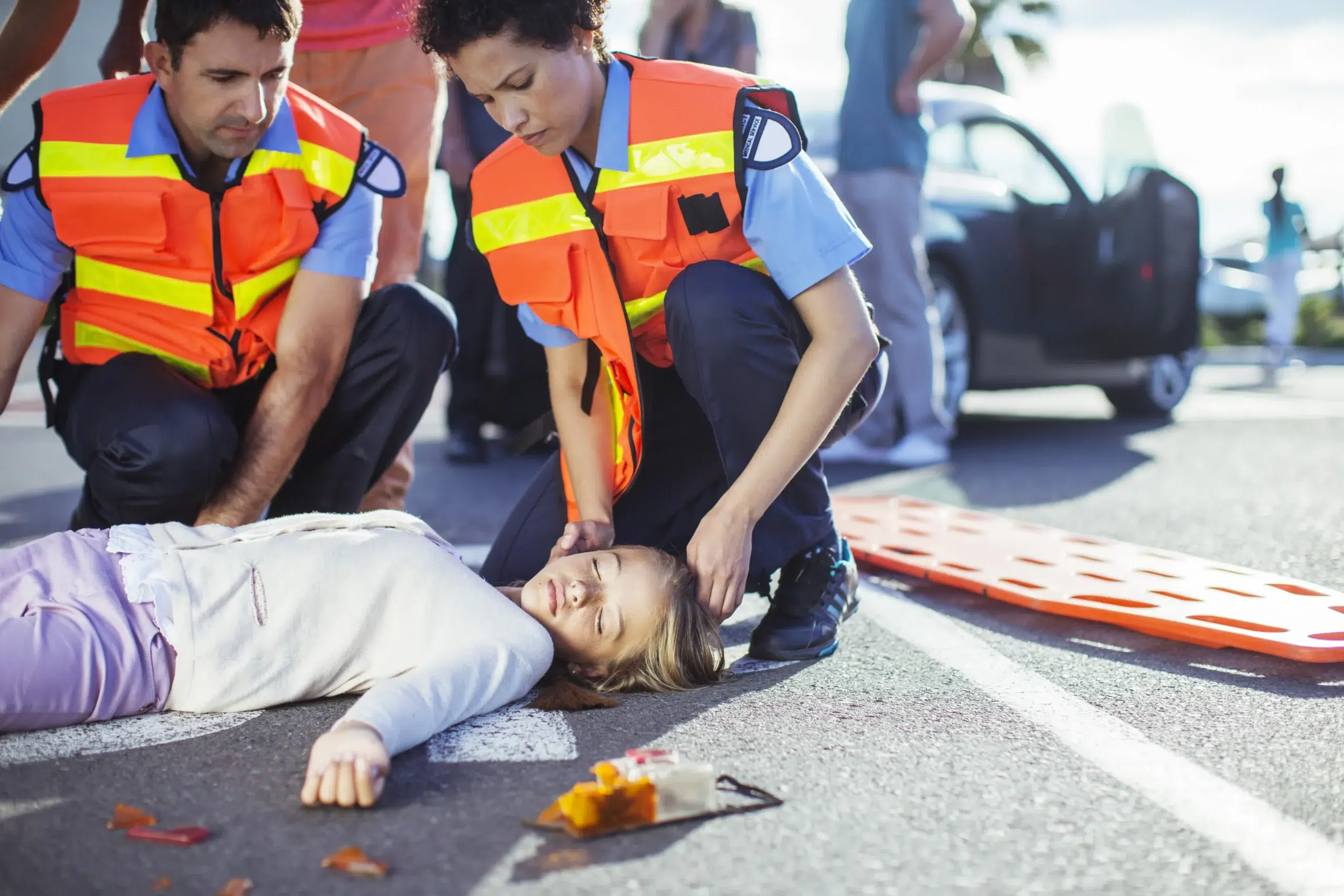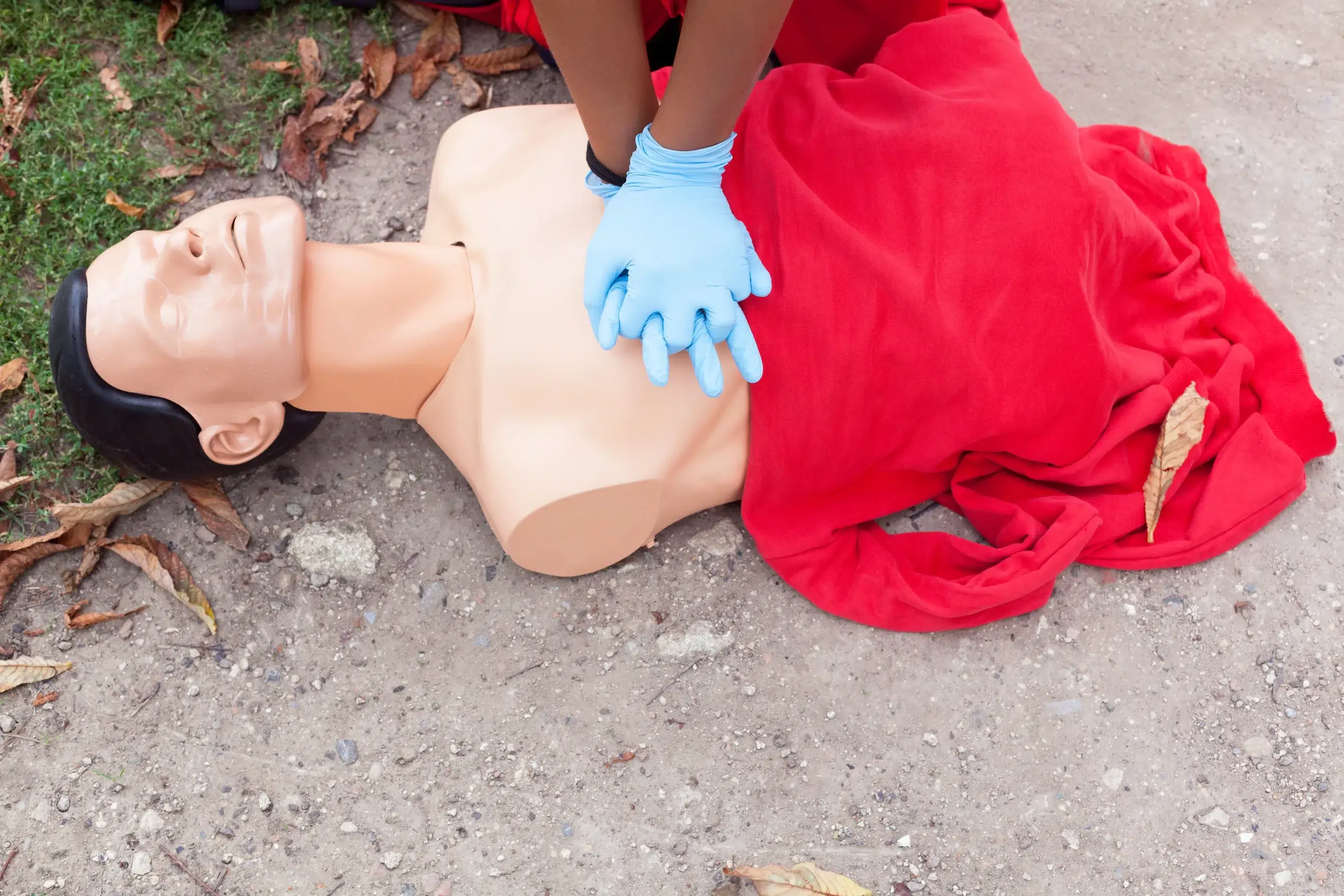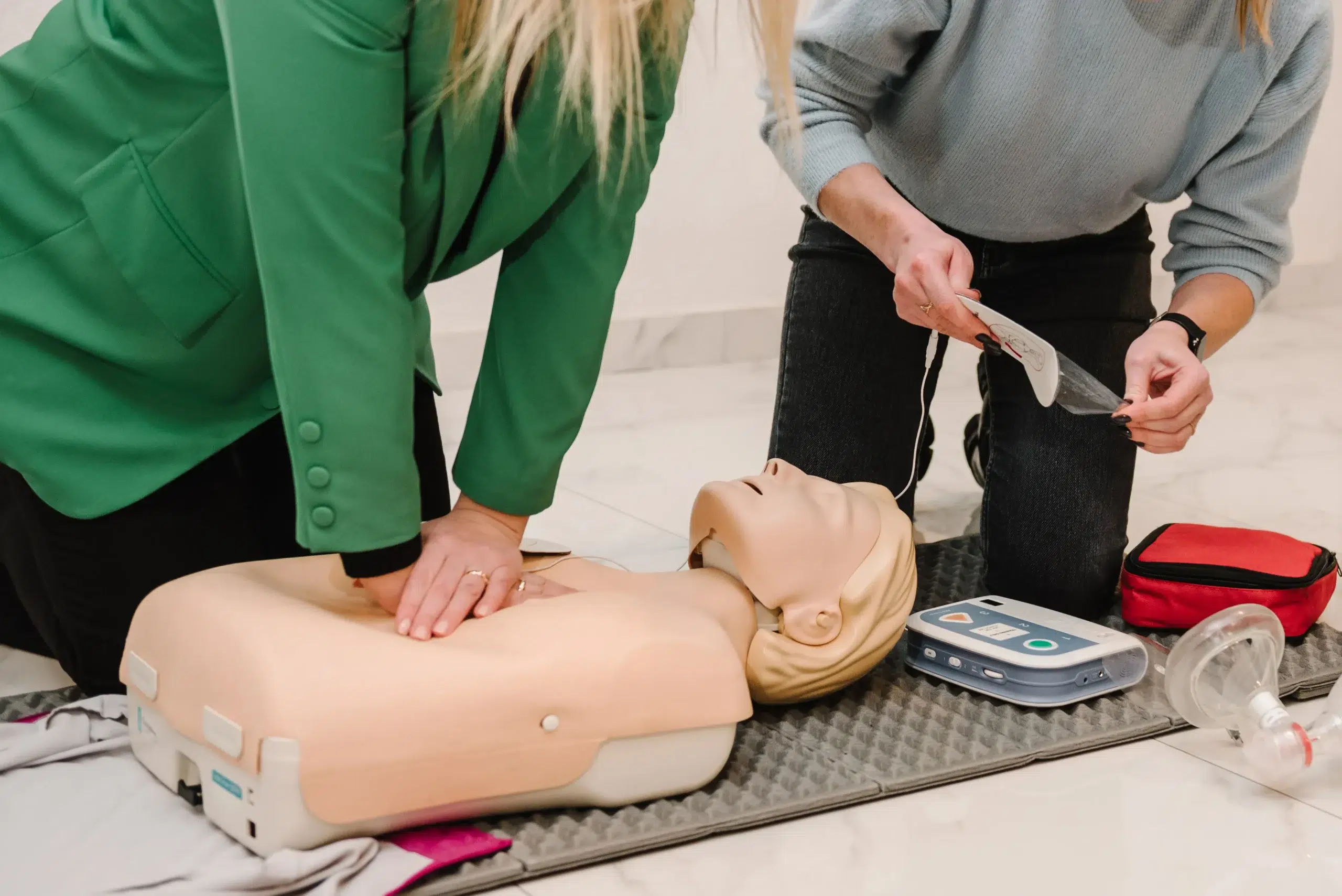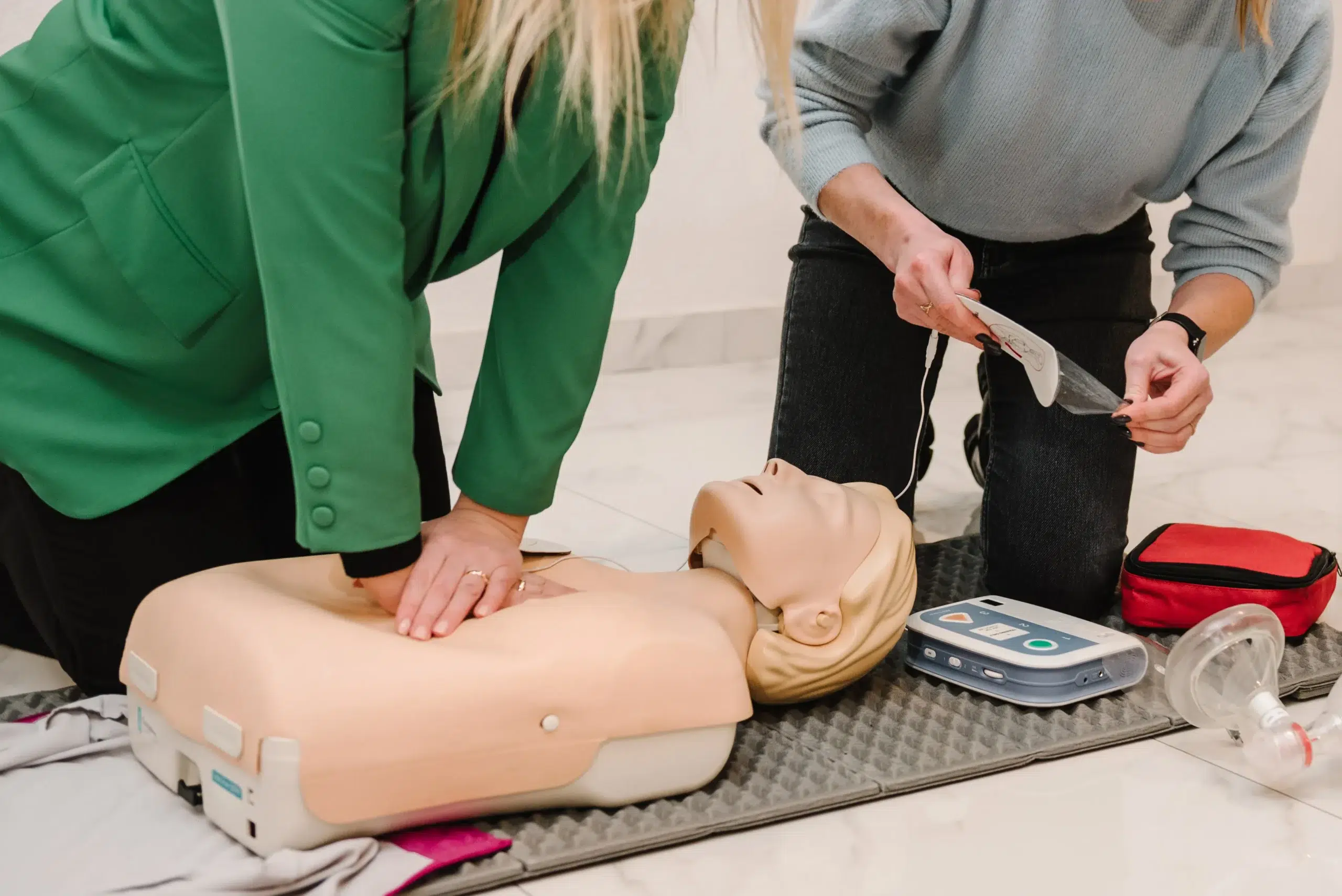Emergencies can happen anytime, anywhere. Are you prepared? Basic Life Support (BLS) training provides the essential skills to respond effectively in critical situations, giving you the confidence to act when it matters most. This article is your go-to resource for all things BLS. We’ll cover what BLS is, who needs it, and how it differs from basic first aid. We’ll also explore the different types of BLS classes available, including online and in-person options, making it easier for you to find BLS classes near me. Plus, we’ll provide tips on choosing the right course, preparing for class, and maintaining your certification.
Key Takeaways
- BLS is more than just CPR: It includes a broader range of skills like using an AED and managing airways, making it a more comprehensive approach to emergency care. Find a course that fits your schedule and learning style, whether in-person, blended, or online.
- Find the right BLS course for you: Look for accreditation from a reputable organization, qualified instructors, and up-to-date materials. Consider cost, schedule, and class size to find the best fit. Citrus Heights CPR Classes offers a low price guarantee and various class options.
- Make your BLS certification count: Keep your skills sharp with refresher courses and stay current with the latest guidelines. BLS training is a valuable asset for any career, demonstrating your commitment to safety and preparedness.
What is BLS?
Basic Life Support (BLS) is a crucial set of life-saving medical procedures used in emergencies like cardiac arrest, respiratory distress, and choking. It goes beyond basic first aid, equipping individuals with the skills to potentially save a life. BLS focuses on maintaining a patient’s airway, breathing, and circulation until professional medical help arrives. It emphasizes early intervention and quick action, recognizing that the first few minutes of an emergency are critical.
What You’ll Learn in BLS
A BLS certification course covers core skills such as CPR (cardiopulmonary resuscitation) for single and multiple responders. You’ll learn how to use an AED (automated external defibrillator) effectively and how to clear an obstructed airway. The training also includes recognizing the signs of a heart attack and stroke, understanding the chain of survival, and practicing effective team dynamics during emergencies. Citrus Heights CPR Classes offers American Heart Association BLS certification, ensuring you receive high-quality training that meets industry standards.
Who Needs BLS Certification?
BLS certification is essential for healthcare professionals like doctors, nurses, paramedics, and other medical personnel. It’s also highly recommended for those in roles requiring a duty of care, such as lifeguards, childcare providers, and teachers. Anyone who wants to be prepared to handle a medical emergency can benefit from BLS training. Having this certification demonstrates valuable skills to employers and shows a commitment to patient safety. Contact us to learn more about our discount group BLS classes.
Common BLS Misconceptions
One common misconception is that BLS is the same as CPR. While CPR is a significant component of BLS, it’s not the entire picture. BLS encompasses a broader range of skills, including AED use and airway management, making it a more comprehensive approach to emergency care. It’s designed for healthcare providers and first responders, providing them with the knowledge and skills to handle various life-threatening situations. Another misconception is that BLS certification lasts forever. Like many certifications, BLS requires periodic renewal to ensure skills are up-to-date and practices align with the latest guidelines. Check with your certifying organization, such as the American Heart Association, for specific renewal requirements. Our RQI classes can help you maintain your skills and stay current with the latest advancements in BLS. We also offer a low price guarantee, ensuring you receive the best value for your training investment.
Find BLS Classes Near You
So, you’re ready to get your BLS certification—fantastic! Let’s find the right class for you. This section breaks down the different types of BLS classes, where to find them, and what to look for when making your decision.
Types of BLS Classes
There are a few different ways you can get BLS certified, each with its own advantages and disadvantages. Think about your learning style, schedule, and budget as you consider these options:
In-Person BLS Classes
Traditional in-person BLS classes offer hands-on learning with a certified instructor. This format allows for real-time feedback, practice with mannequins, and the opportunity to ask questions and interact with other students. In-person classes are a great option for those who thrive in a structured, interactive environment. Most in-person BLS courses cost around $90 for initial certification, with a $60 fee for renewal.
Blended Learning BLS
Blended learning combines online coursework with in-person skills sessions. You’ll work through online modules at your own pace, then attend a shorter in-person session to practice your skills and demonstrate competency. This option offers flexibility while still providing the essential hands-on component. The American Red Cross offers this type of training.
Online BLS Certification
Fully online BLS courses offer maximum flexibility, allowing you to complete the coursework anytime, anywhere. While convenient, it’s important to ensure the online course you choose meets the requirements of your workplace or licensing body. Some employers may not accept fully online BLS certifications, so double-check before enrolling.
How to Find a Course
Finding a BLS course near you is easier than you might think. Start by checking with your local hospitals, clinics, and community centers. These organizations often offer BLS certification courses for both staff and the public. You can also search online for BLS training providers in your area. Citrus Heights CPR Classes offers a convenient course finder to help you locate classes near you.
Choosing the Right Course
With so many options available, choosing the right BLS course can feel overwhelming. Here are a few key factors to consider:
- Accreditation: Make sure the course is accredited by a reputable organization like the American Heart Association or the American Red Cross.
- Instructor Qualifications: Look for courses taught by experienced, certified instructors.
- Course Materials: High-quality, up-to-date, and comprehensive course materials are crucial for effective BLS certification.
- Cost and Schedule: Compare the cost and schedule of different courses to find one that fits your budget and availability. Citrus Heights CPR Classes offers a low price guarantee.
- Class Size: Smaller class sizes can offer more personalized attention from the instructor. If you prefer a more intimate learning environment, consider a smaller class. You can contact us to discuss class size options.
What Happens in a BLS Class?
So, you’ve decided to get BLS certified—fantastic! This section walks you through the typical BLS class experience, from format and costs to preparation and certification.
Course Format and Length
BLS classes accommodate different learning styles and needs. Whether you’re a healthcare provider seeking initial certification, a seasoned professional needing a refresher, or someone who prefers self-paced learning, there’s an option for you. Providers offer traditional classroom-based training, blended learning (a mix of online and in-person instruction), and even a “Challenge” route where you study independently and then demonstrate your skills through a test and exam. Instructor training is also an option if you’re interested in teaching BLS. Most BLS courses range from 2.5 to 4.5 hours, depending on the format and provider.
Costs & Discounts
While BLS course costs vary, initial certification generally averages around $90, with renewals costing around $60. Many training centers, like Citrus Heights CPR Classes, offer discounts, particularly for groups. It’s always wise to ask about ways to save. Check out our low price guarantee.
Preparing for Class
A little preparation goes a long way. Before your BLS class, review any available pre-course materials or resources your provider offers. Knowing what to expect will help you get the most out of your learning experience, whether you’ve chosen in-person instruction or blended learning.
Certification & Renewal
After successfully completing your BLS course, you’ll receive a certification card (often a digital version) that you can easily access, print, and share. These certifications are usually valid for two years. To maintain your certification, complete a renewal course before the expiration date. Keep an eye on your card and plan to recertify to keep your skills sharp. Contact us to learn more about our BLS certification courses.
Compare BLS Providers
Finding the right BLS course means understanding what each training provider offers. Here’s a quick overview of some popular options so you can choose the best fit.
Citrus Heights CPR Classes
If you’re near Sacramento, Citrus Heights CPR Classes offers convenient and affordable BLS certification. They emphasize high-quality instruction, covering a wide range of skills that go beyond the basics of CPR. Their classes build confidence so you can respond effectively in emergencies. For an even better value, check out their group discounts. Citrus Heights CPR Classes also offers RQI classes and has a low price guarantee. Contact them to learn more.
American Heart Association
The American Heart Association (AHA) is a trusted name in CPR training. They offer a variety of courses, including convenient online BLS courses for flexible learning. This is a solid option if you have a busy schedule or limited access to in-person training.
Red Cross
The Red Cross provides BLS classes designed for healthcare professionals like nurses, doctors, and EMTs. Their training emphasizes responding to breathing and cardiac emergencies for adults, children, and infants.
National CPR Foundation
The National CPR Foundation offers a combined Healthcare Provider CPR/AED and First Aid course, bundling essential skills into a single program. Many hospitals and clinics rely on the National CPR Foundation for staff training. Use their online lookup tool to find a course near you.
ProTrainings
ProTrainings uses a blended learning approach, combining online coursework with hands-on training. This lets you learn at your own pace online, then practice your skills in person. Explore their BLS options on their website.
National Safety Council
The National Safety Council (NSC) offers various safety training programs, including BLS certification. They develop courses for both healthcare providers and the general public. Learn more about their programs on the NSC website.
Make the Most of Your BLS Certification
Getting your BLS certification is a significant achievement. Now, let’s talk about how to really make it count, both personally and professionally.
Essential Life-Saving Skills
BLS certification equips you with crucial skills that extend beyond basic CPR. You’ll learn to recognize the signs of a cardiac arrest, deliver high-quality CPR, and confidently use an AED. Early defibrillation is often the key to survival, and your BLS training will prepare you to act quickly and effectively in these critical situations. It’s about having the knowledge and the practice to make a real difference when every second counts. This comprehensive approach sets BLS training apart, giving you a broader skillset to handle various emergencies.
Career Benefits
A BLS certification is a valuable asset for many professions. Whether you’re a healthcare provider, a first responder, or work in any field where emergencies might occur, having this certification demonstrates your commitment to safety and preparedness. It can open doors to new opportunities and enhance your existing career. Employers value individuals who possess these skills, knowing they can rely on you in critical situations. Even if it’s not a direct requirement for your current role, a BLS certification shows initiative.
Refresh Your Skills
Just like any skill, BLS requires regular practice. Consider refresher courses or online resources to stay up-to-date with the latest guidelines and techniques. This ongoing learning ensures you’re always prepared to respond effectively in an emergency. Check with your employer or local training centers like Citrus Heights CPR Classes for available refresher courses. Staying current with your BLS skills not only benefits those you may need to assist but also reinforces your confidence.
Related Articles
- BLS Certification in Sacramento: Your Comprehensive Guide – Citrus Heights CPR Classes
- BLS for Healthcare Providers in Sacramento: A Complete Guide – Citrus Heights CPR Classes
- BLS Classes in Sacramento: A Complete Guide
- BLS Classes in Citrus Heights: Your Complete Guide – Citrus Heights CPR Classes
Frequently Asked Questions
How often do I need to renew my BLS certification? BLS certification is typically valid for two years. To maintain your certification, you’ll need to complete a renewal course before the expiration date on your card.
What’s the difference between BLS and CPR? CPR is a vital part of BLS, but BLS covers a wider range of skills. Think of BLS as a more comprehensive approach to emergency care, including CPR, AED use, and airway management techniques. It’s designed to equip healthcare providers and first responders with the knowledge to handle various life-threatening situations.
Are online BLS courses accepted everywhere? While online BLS courses offer flexibility, it’s essential to confirm whether your employer or licensing body accepts fully online certifications. Some organizations may require in-person skills assessment or prefer blended learning formats that combine online coursework with hands-on practice.
What should I look for when choosing a BLS course? Look for courses accredited by reputable organizations like the American Heart Association or the American Red Cross. Check the instructor’s qualifications and experience, and make sure the course materials are up-to-date and comprehensive. Consider factors like cost, schedule, and class size to find the best fit for your needs.
How can I stay up-to-date with my BLS skills after getting certified? Regular practice is key to maintaining your BLS skills. Look for refresher courses, online resources, or practice sessions to stay sharp and confident. Many training centers offer refresher courses, and online resources can provide valuable updates on the latest guidelines and techniques.


